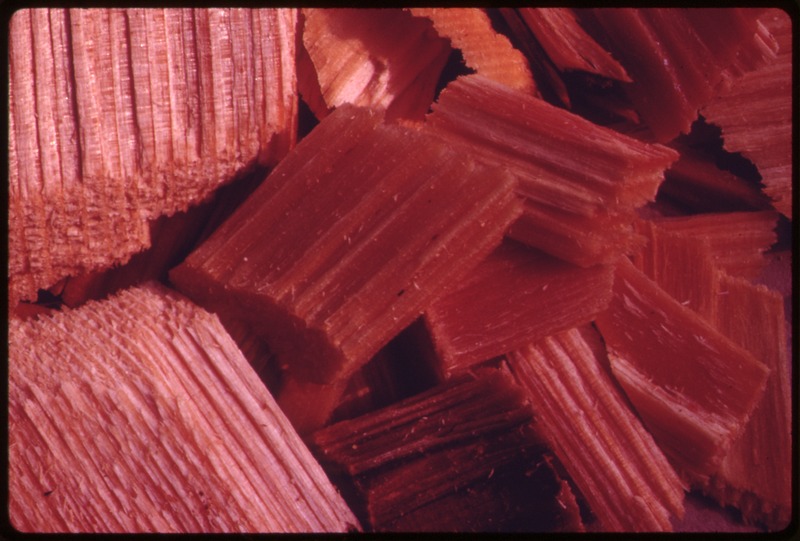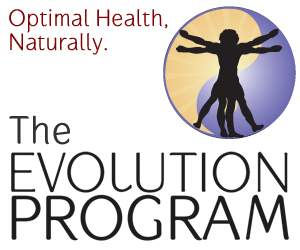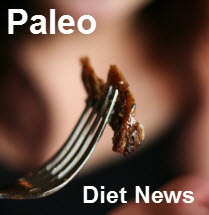Paleo Diet: The 6 Horrifying Lies of the Food Industry
Pauli Poisuo of Cracked.com has taken a look at our food supply. His article “The 6 Most Horrifying Lies The Food Industry is Feeding You“, lists things that the food industry does to our food that will make you rethink eating ANYTHING that comes out of a bottle or cardboard box. While the article is humorous, these are real things that the food companies are doing. Was there ever a better excuse to follow the Paleo diet than this!?
#6. The Secret Ingredient: Wood
You know what’s awesome? Newspaper. Or, to be precise, the lack thereof. The Internet and other electric media have all but eaten up classic print media, with the circulations of almost all papers on the wane. Say, do you ever wonder what they do with all that surplus wood pulp?……. They hide it behind a bullshit name and make you eat it, that’s what.
And everybody’s doing it. Aunt Jemima’s pancake syrup? Cellulose. Pillsbury Pastry Puffs? Cellulose. Kraft Bagel-Fuls? Fast-food cheese? Sara Lee’s breakfast bowls? Cellulose, cellulose, goddamn cellulose.

Wood chipped for the pulping process - this is in our food!
Yes, wood pulp. The food industry adds wood pulp to foods like bread, milk shakes, ice cream and much more. It is used to provide bulk, to create a creamy texture and to replacecalories (from the Wall Street Journal):
…. cutting calories from food doesn’t cause a problem because the country is in the grip of an obesity epidemic, says Joanne Slavin, professor of food science and nutrition at the University of Minnesota. She served as chairwoman the carbohydrate committee of the 2010 Dietary Guidelines Advisory Committee.
Nice for them to make that call. And if you think that organic packaged products don’t contain wood pulp, think again.
Organic Valley uses powdered cellulose made from wood pulp in its shredded-cheese products. The company would prefer not to use a synthetic ingredient, but cellulose is bland, white and repels moisture, making it the favored choice over products such as potato starch, says Tripp Hughes, director of product marketing for Organic Valley.
Only powdered cellulose in its least manipulated form can be used in foods labeled “organic” or “made with organic” ingredients by the U.S. Department of Agriculture.
Personally, I don’t care if it is organic or not. I am not a termite or an Asian Long Horned beetle. I don’t eat wood.
It turns out that cellulose can provide texture to processed foods, so food companies have taken to happily using it as a replacement for such unnecessary and inconveniently expensive ingredients as flour and oil. As the cellulose is edible and non-poisonous, the FDA has no interest for restricting its use — or, for that matter, the maximum amount of it that food companies can use in a product. It is pretty much everywhere, and even organic foods are no salvation — after all, cellulose used to be wood and can therefore be called organic, at least to an extent.
But the worst thing about cellulose is not that it’s everywhere. The worst thing is that it is not food at all. Cellulose is, unlike the actual, normal food items you think you’re paying for, completely indigestible by human beings, and it has no nutritional value to speak of. If a product contains enough of it, you can literally get more nutrients from licking the sweet, sweet fingerprints off its wrapper.
#5. Zombie Orange Juice
A delicious glass of fresh, cold orange juice. Or is it?
Quick, name the most healthy drink your nearest store has to offer. You said orange juice, didn’t you? It’s what everybody makes you drink when you get sick. Hell, that shit must be like medicine or something. And the labels are always about health benefits — the cartons scream “100 percent natural!”, “Not from concentrate!” and “No added sugar!”
And why not believe them? When it comes to making the stuff, orange juice isn’t sausage. You take oranges, you squeeze oranges, you put the result in a carton, with or without pulp. End of story, beginning of deliciousness.
But what if we told you that “freshly squeezed” juice of yours can very well be a year old, and has been subjected to stuff that would make the Re-Animator puke?
Orange juice is not what you think. The cartons conjure up images of an orange being squeezed naturally to extract the delicious juice. But the reality is a far cry from that image. Pauli Poisuo continues …
The process indeed starts with the oranges being squeezed, but that’s the first and last normal step in the process. The juice is then immediately sealed in giant holding tanks and all the oxygen is removed. That allows the liquid to keep without spoiling for up to a year. That’s why they can distribute it year-round, even when oranges aren’t in season.
There is just one downside to the process (from the manufacturers’ point of view, that is) — it removes all the taste from the liquid. So, now they’re stuck with vats of extremely vintage watery fruit muck that tastes of paper and little else. What’s a poor giant beverage company to do? Why, they re-flavor that shit with a carefully constructed mix of chemicals called a flavor pack, which are manufactured by the same fragrance companies that formulate CK One and other perfumes. Then they bottle the orange scented paper water and sell it to you.
And, thanks to a loophole in regulations, they often don’t even bother mentioning the flavor pack chemicals in the list of ingredients. Hear that low moan from the kitchen? That’s the Minute Maid you bought yesterday. It knows you know.
#4. Ammonia-Infused Hamburger
Perhaps this is one of the reasons that McDonald’s hamburgers don’t spoil even after being left out, in the open for months on end. And it may not matter if you buy the burger from your local Burger King or the supermarket.
USDA inspection of beef grinding operation. Ammonia anyone?
Ammonia. You know, the harsh chemical they use in fertilizers and oven cleaners? It kills E.coli really well. So, they invented a process where they pass the hamburger through a pipe where it is doused in ammonia gas. And you probably never heard about it, other than those times that .
The ammonia process is an invention of a single company called Beef Products Inc., which originally developed it as a way to use the absolute cheapest parts of the animal, instead of that silly “prime cuts” stuff the competitors were offering (and the restaurant chains swear we’re still getting). Consequently, Beef Products Inc. has pretty much cornered the burger patty market in the U.S. to the point that . Thanks, ammonia!
Do you need a better reason to go Paleo than this?
#3 Fake Berries
Blueberries. You won't find these in your Kellogg's® Frosted Mini-Wheats® Blueberry Muffin cereal
So, you think that those blueberries in that blueberry muffin are good for you? Or how about that box of cereal with added blueberries? Blueberries conjure up such wonderful images when added to our foods. Well……
Studies of products that supposedly contain blueberries indicate that many of them didn’t originate in nature. All those dangly and chewy and juicy bits of berry are completely artificial, made with different combinations of corn syrup and a little chemist’s set worth of food colorings and other chemicals with a whole bunch of numbers and letters in their names.
They do a damn good job of faking it, too — you need a chemist’s set of your own to be able to call bullshit. You can sort of tell them from the ingredient lists, too, if you know what to look for, although the manufacturers tend to camouflage them under bullshit terms like “blueberry flakes” or “blueberry crunchlets.”
There are a number of major differences between the real thing and the Abomination Blueberry: The fake blueberries have the advantages of a longer shelf life and, of course, being cheaper to produce. But they have absolutely none of the health benefits and nutrients of the real thing. This, of course, doesn’t stop the manufacturers from riding the Blueberry Health Train all the way to the bank, sticking pictures of fresh berries and other bullshit cues all over the product packaging.
#2. “Free Range” Chickens That Are Crammed Into a Giant Room
This is a lie that anyone following the Paleo diet should know about - the difference between true free-range or pastured chickens and the claims made by the big poultry and egg producers about their chickens being free range.
This is what the term "free range" brings to mind. Image courtesy of Woodley Wonderworks
Words have power, and “free range” in its original sense means unfenced and unrestrained. That makes it a powerful phrase that, no matter how smart we are, conjures subconscious images of freedom hens, riding tiny little freedom horses out on the plains, wearing hen-sized cowboy hats and leaving a happy little trail of delicious freedom eggs in their wake. There may be mandolin music.
But the reality is there are absolutely no regulations whatsoever for the use of the term “free range” on anything other than chickens raised for their meat. Your Snickers bar could be free range for all the government cares.
The industry knows this full well and happily makes us lap up the free range myth, even though in reality a free range hen lives in pretty much the same prison as a battery cage hen — except its whole life takes place in the prison shower, rather than a cell.
Awareness of the free range myth is slowly increasing, but although a manufacturer that has been pushing his luck a bit too much does get jailed every once in a while, that doesn’t do much to the overall phenomenon. In fact, Europe is set to ban egg production in cage systems come 2012. Guess what the replacement is going to be?
This is the reality of "free range"
#1. Bullshit Health Claims
And the number one lie that we are being fed by the food industry? Health claims made for foods that are barely healthy.
The vast majority of product health claims use somewhat older technology than most of us realize: the ancient art of bullshitting. The “health effects” of wonder yogurts and most other products with supposed medical-level health benefits can be debunked completely, thoroughly and easily. So why are they able to keep marketing this stuff?
It all started in 2002, when many ordinary foods found themselves suddenly gaining surprising, hitherto unseen superpowers. This is when the FDA introduced us to a new category of pre-approved product claims. It was called “qualified health claims,” and it was basically just another list of marketing bullshit the company can use if their product meets certain qualifications. This was nothing new. What was new, however, was that the list said no consensus for the scientific evidence for the product’s health claims was needed.
Since “no consensus needed” is law-talk for “pay a dude in a lab coat enough to say your product is magic and we’ll take his word for it no matter what everyone else says,” companies immediately went apeshit. Suddenly, everyone had a respected scientist or six in their corner, and the papers they published enabled basically whatever they wanted to use in their marketing and packaging.
We’re not saying that none of the products boasting health properties work. There are plenty out there, but they’re kind of difficult to find under the constant stream of bullshit supplementary claims. Come on, food industry — just tell us the truth. Don’t you realize that we’ll just eat it anyway? Shit, people still buy cigarettes, don’t they?
Read the full article here
Conventional or organic, we are being lied to every time we walk into the supermarket. The very best action you can take is to not buy any processed or packaged food. Buy only what you can recognize as food - whole fruits and vegetables. If you can, find a local farmer you can trust to provide meat, dairy and eggs. If you embrace the Paleo diet lifestyle you will become more conscious of where your food comes from and make better choices. Don’t continue to be fooled by the food industries lies.





